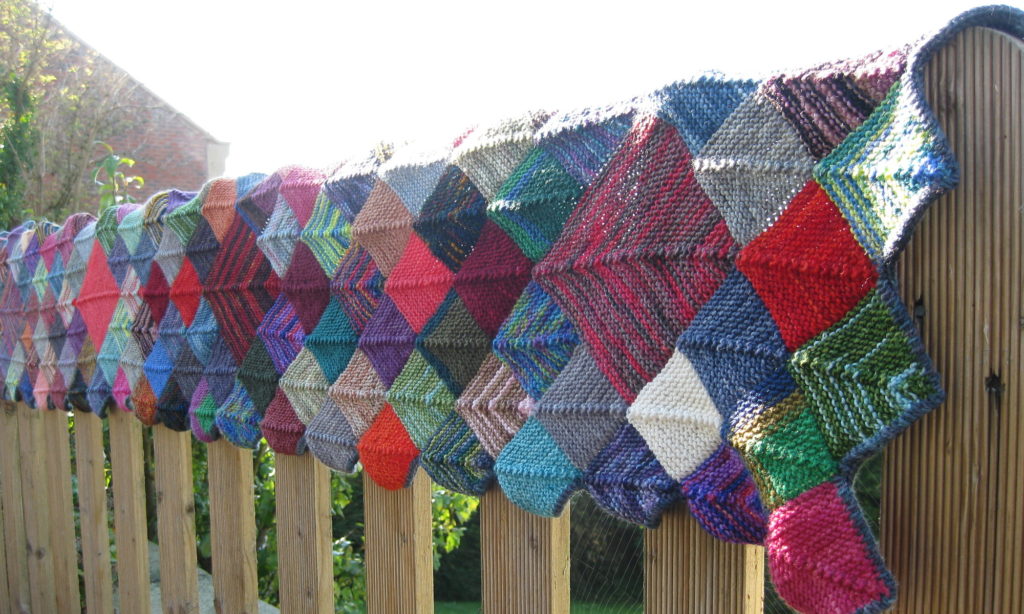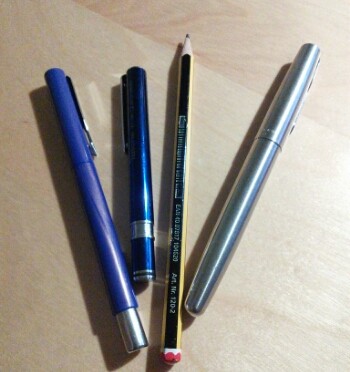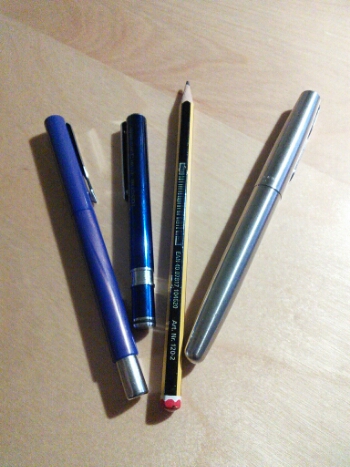Pens
Although most of my communication happens through a keyboard or a phone, there are still quite a number of things I have to write by hand: cards, letters for work, notes to teachers. I find I think differently when I’m writing to when I’m typing. The physicality of it and the slowness mean the synapses in the brain fire differently and I find that creative processes are changed.
Having the correct pen for the job in hand is more pleasing to me than might be warranted by the insignificance of the task in hand. Is it the pleasing scratch of a pencil, the effortless glide of the gel pen or the springy fountain pen that is right for this particular piece of work?
When I was attending lectures regularly, I always had my set of Staedtler fineline pens. The different colours helped to organise my thoughts. The nib was fine enough for the speedy scrawling that was needed and, very often, the notes were even legible afterwards. Woe betide anyone who replaced a pen out of order in the box.
The writing implement we were first given at school was an HB pencil: yellow and black striped with a red end. I go out of my way to buy these rather than any other pencil because they anchor me back to my very first experiments in writing. I write in pencil when I’m not sure of what I want to say. The temporary nature is important. It doesn’t matter if something is wrong: it can be rubbed away with no worries.
Fountain pens are the kings of pens. They are needy: demanding ink, objecting if left alone too long, yet have a certain grandeur. The balance of a good fountain pen can increase the pleasure of writing. I have three regular fountain pens:
- A cheap Parker, filled with permanent black ink for work. This is the pen that gets used by wedding couples to sign their names, records baptisms and funerals in the registers. Every so often I buy a spare pen, yet only ever seem to have one.
- A nice Parker, metal and smooth to the touch. This is my usual letter writing pen, which sits on my desk until needed. Usually it is filled with blue ink. The previous ink cartridge in it was black and it really didn’t suit the pen. It is much happier in blue. Sadly, very often this pen dries out through under-use. Deplorable, but I have a strategy for overcoming this, of which more later.
- A Japanese pen, an Ohto Tasche, which travels with me in my handbag. This is the pen I use in meetings. It is a half length pen, only really being usable once you fix the lid on the end, at which point it becomes perfectly balanced. This is the pen that has frivolous colours of ink in. I found a set of cartridges that are pale blue, pink and purple. It has a slightly scratchy writing style, more like a pencil in feel, but I enjoy using it. The smoothness of the action when taking off the lid or replacing it is particularly pleasing.
There are other pens of course: dozens of cheap biros litter the house, (along with a few superior biros that rejoice in the name ‘rollerball’ and are actually quite nice) and there are felt pens galore here and there.
I also have a set of dip pen nibs and a heap of good intentions to figure out how to use them, but haven’t had the time. I rather sympathise with Stephen Fry, who writes in one of his books about how his enthusiasm for calligraphy waxes and wanes. He buys calligraphy sets, spends one glorious afternoon playing with them, then ends up relegating them to the back of a drawer somewhere until they are unusable.
Paper
No matter how many pens you have and how wonderful they are, there is not a lot you can do with them without paper.
I don’t think I am as discerning in my choice of paper as I am with what pen to use. It would probably be of some benefit to my handwriting to take more care over the paper.
Loose leaf paper is the nicest to write on because if you mess up a page you can just begin again. I have a big box of foolscap size, which makes a nice change to the golden ratios of A4 and A5.
Notebooks are a mixed blessing. Not only do they seem intimidating in their blankness, but they are quite tricky to write in with a decent pen unless they have the sort of spine that lies flat. I like to buy notebooks, but tend to wait to use them until I find a worthy use, so I have a little stash that probably won’t ever run out.
Get to the point
I did have a reason for writing about stationery. Last year, in late February, I discovered this site: Lettermo. The challenge is:
- In the month of February, mail at least one item through the post every day it runs. Write a postcard, a letter, send a picture, or a cutting from a newspaper, or a fabric swatch.
- Write back to everyone who writes to you. This can count as one of your mailed items.
I’m inclined to take up the challenge this year, since I was too late last year. In preparation, I’ve been assessing my store of stationery items. The missing ingredients to the whole challenge are people to write to and things to say. Without either of those, the challenge will fall rather flat.
If you would like to receive a letter as part of the Lettermo challenge this year, then leave a comment including a topic or two you would like me to write about. Don’t put your address in the comment (unless you really don’t care about it being online). You can probably figure out how to send me a more private message if you look at the about page, (which I have just had to compose).



Comments
One response to “A yarn-free zone”
There was some research doing the rounds at work about how students who take notes in lectures on a laptop/tablet process what they’re learning about differently to students who write notes using pen and paper. Apparently they don’t process the information as much, which makes it harder for them to recall and then apply it in the future.
I posted you something at the end of last week before reading this!!!